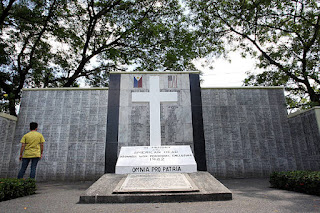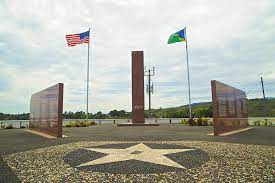Surrendering
Bataan Death March-
For this visit, we are going to Capas, Philippines in the Tarlac province. The Capas National Shrine can be found here. This is where Camp O'Donnell is located and was the destination for the Bataan Death March. After Pearl Harbor, the Japanese invaded Luzon, Philippines in January 1942. The U.S. can in to help. However, due to the shortage of supplies, around 75,000 Filipino and American soldiers surrendered. There were simply no reinforcements. Japanese soldiers forced the prisoners of war (POW) to march about 65 or 66 miles without any water, food, and medical supplies in the tropical conditions. These prisoners were starved, beaten, and even beheaded. Those who survived the march later died at camp due to starvation and disease. Some of the most horrific war crimes committed by the Japanese happened throughout the march; an absolute tragedy. Only 54,000 prisoners reached camp and had to further endure the Japanese's treatment. After the war, Lietenant General Homma Masaharu commander of the Japanese invasion of the Philippines was held responsible for the war crime by the American military tribunal. He was executed on April 3, 1946.
A little more information on this topic is that the U.S. did not know that this was happening until 10 Americans and 2 Filipinos escaped. Camp O'Donnell was actually a prison before the Japanese used it as a concentration camp. The 2 Filipinos helped the Americans navigate and survive throughout the terrain until they were able to find the U.S military and reported what is happening.
Capas National Shrine:
It was more personal to me to explore this topic because my family is from the Philippines. I never learned much about its history nor its role during WWII. I took this opportunity to learn more and this event was very heart wrenching.
Rescued: Here is a radio audio of the announcer listing all the rescued soldiers from Camp O'Donnell.






Comments
Post a Comment